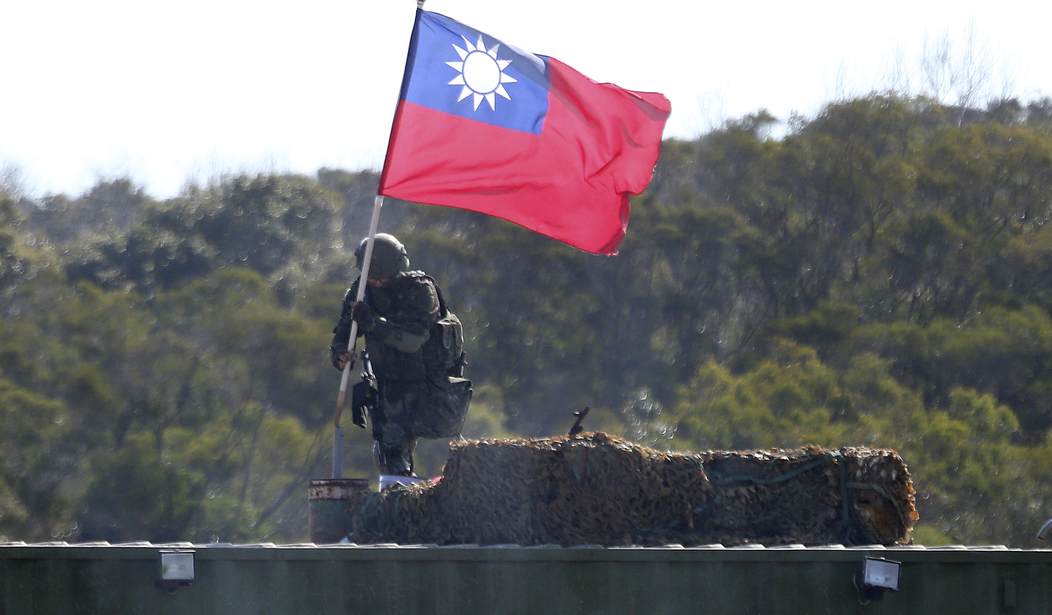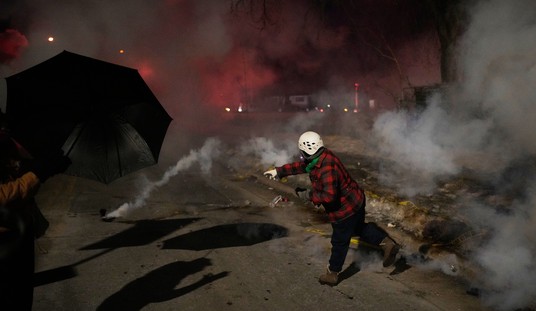Will China Invade Taiwan? Despite the recent saber-rattling, probably not any time soon. It lacks the amphibious capacity to land the 30-plus brigades it will need to overcome the island’s defense. “China does not appear to be currently investing in the equipment likely required for a direct assault on Taiwan, such as large amphibious assault ships and medium landing craft necessary for a large beach assault.”
Beijing’s current naval build implies that the prerequisite for taking Taipei is neutralizing the U.S. navy. “China’s recent spate of military exercises and the PLA Navy’s focus on building large aircraft carriers, escort cruisers and amphibious transport dock (LPD) ships suggest the military, for now, is geared toward blue water naval operations and smaller expeditionary missions.”
In other words, the CCP thinks Washington must “fall” before Taipei can be stormed. That strategy could change, but not overnight. Since an invasion of Taiwan would have to be on the scale of Operation Overlord or Iceberg (the invasion of Okinawa) to overcome 22 defending brigades, the buildup could not easily be concealed, and there should be no surprises. Given this, conventional wisdom holds that China, rather than attempting a quick pounce, is executing a siege strategy, and will use so-called “gray zone” warfare to gradually encircle Taiwan.
It’s not the final, titanic clash that Taiwan has long feared, with Chinese troops storming the beaches. Instead, the People’s Liberation Army, China’s two-million-strong military, has launched a form of “gray zone” warfare. In this irregular type of conflict, which stops short of an actual shooting war, the aim is to subdue the foe through exhaustion.
Beijing is conducting waves of threatening forays from the air while ratcheting up existing pressure tactics to erode Taiwan’s will to resist, say current and former senior Taiwanese and U.S. military officers. The flights, they say, complement amphibious landing exercises, naval patrols, cyber attacks and diplomatic isolation.
Again the key to encirclement’s success is Washington’s reaction. So, while 77 Chinese combat aircraft have provocatively intruded into Taiwan’s air defense identification zone, their real purpose is to beat like rain on the windows of the Oval Office to attract the attention of the man within. The response of the State Department so far has been to tersely repeat the U.S. policy to defend Taiwan.
The United States is very concerned by the People’s Republic of China’s provocative military activity near Taiwan, which is destabilizing, risks miscalculations, and undermines regional peace and stability. We urge Beijing to cease its military, diplomatic, and economic pressure and coercion against Taiwan.
We have an abiding interest in peace and stability across the Taiwan Strait. We will continue to assist Taiwan in maintaining a sufficient self-defense capability, and we will maintain our commitments as outlined in the Three Communiqués, the Taiwan Relations Act, and the Six Assurances. The U.S. commitment to Taiwan is rock solid and contributes to the maintenance of peace and stability across the Taiwan Strait and within the region. We will continue to stand with friends and allies to advance our shared prosperity, security, and values and deepen our ties with democratic Taiwan.
But there is more than a tactical “miscalculation” at play here. There is a strategic shift. Looming large over the scene is the perception that China is becoming more dangerous because it is a declining power. As the American Enterprise Institute put it, based on a recent piece in Foreign Policy, “The United States needs to prepare for a major war, not because its rival is rising but because of the opposite.”
Why do great powers fight great wars? The conventional answer is a story of rising challengers and declining hegemons. An ascendant power, which chafes at the rules of the existing order, gains ground on an established power—the country that made those rules. Tensions multiply; tests of strength ensue. The outcome is a spiral of fear and hostility leading, almost inevitably, to conflict. “The growth of the power of Athens, and the alarm which this inspired in Sparta, made war inevitable,” the ancient historian Thucydides wrote—a truism now invoked, ad nauseum, in explaining the U.S.-China rivalry.
The idea of a Thucydides Trap, popularized by Harvard political scientist Graham Allison, holds that the danger of war will skyrocket as a surging China overtakes a sagging America. Even Chinese President Xi Jinping has endorsed the concept arguing Washington must make room for Beijing. As tensions between the United States and China escalate, the belief that the fundamental cause of friction is a looming “power transition”—the replacement of one hegemon by another—has become canonical.
The only problem with this familiar formula is that it’s wrong.
If China is actually declining, not only economically but demographically, then it doesn’t have the time to strangle Taiwan before itself collapsing. Taiwan becomes a problem of Now or Never for Beijing, with all the disastrous risks desperation elicits. But it’s not game over if Joe Biden can match Chinese decline with a collapse of his own. Alex Lo of the South China Morning Post poses the question: “Suppose both China and the US are in decline …?”
“I was led to this bitter train of thought after someone emailed me a new article, “China Is a Declining Power – and That’s the Problem”, in Foreign Policy. Please note I am not upset because my inner Chinese patriot is offended by the claim. Frankly, it may well be the case with China today, or not. I just don’t know. What really frustrates me is that the authors, both American political science profs, of course, are arguing against other political scientists, who argue “China is the rising power – and that’s the problem”. (Sorry, I summarized the last bit, but I think that’s the gist.)” …
American democracy? It looks more and more like an oligarchy by the day, the rule by/for/of the rich and special interests. The Chinese economy? Is it capitalist, communist, hybrid or mixed? Who knows what it is these days? Certainly, both systems are showing serious cracks, with their foundational flaws exposed.
But let me venture another possibility, combination or permutation, say, both superpowers are in decline. Whatever we mean by “decline”, relative or absolute, hegemonic or not, it’s not an unreasonable presupposition about the state of the two countries. I am sure there is plenty of data out there that would paint a pretty grim picture of both countries.
So, I ask our wise political scientists: if both superpowers are in decline or have peaked, are they more or less likely to go at each other’s throats? Well, judging by the aforementioned discussions, if both sides are in decline, wouldn’t both be the problem? And that’s the real problem for the rest of the world.
Barack Obama reportedly said: “Don’t underestimate Joe’s ability to (expletive) things up.” Speaking of Joe’s $3.5T “Build Back Better” bill, House Budget Committee Chairman John Yarmuth told CNN’s Erin Burnett, “It’s not a question of what we can afford. The federal government can afford anything that it feels it needs to do and right now that’s what we ought to be focused on.”
If you can’t beat China, join them.
A scenario where entropy wins means that, rather than achieving an End of History similar to what followed the fall of the Soviet Union, the struggle between the U.S. and China will result in a collapse of the old Global World, succeeded by an unsettled period like that after World War 1. Joe Biden won’t be the next Ronald Reagan, at best only the new Woodrow Wilson.
Books: Rain of Steel: Mitscher’s Task Force 58, Ugaki’s Thunder Gods, and the Kamikaze War off OkinawaKindle Edition by Stephen L. Moore. Rain of Steel follows Navy and Marine carrier aviators in the desperate air battles to control the kamikazes directed by Vice Admiral Matome Ugaki. The latter would unleash ten different Kikusui aerial suicide operations, one including a naval force built around the world’s most powerful battleship, the 71,000-ton Yamato. These battles are related largely through the words and experiences of some of the last living U.S. fighter aces of World War II.
What Really Happened In Wuhan, Sharri Markson. Part-thriller, part-expose, What Really Happened in Wuhan is a ground-breaking investigation from leading journalist Sharri Markson into the origins of Covid-19, the cover-ups, the conspiracies and the classified research. It features never-before-seen primary documents exposing China’s concealment of the virus, fresh interviews with whistleblower doctors in Wuhan and crucial eyewitness accounts that dismantle what we thought we knew about when the outbreak hit.










Join the conversation as a VIP Member